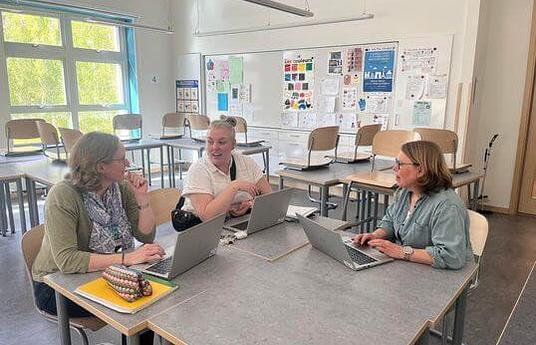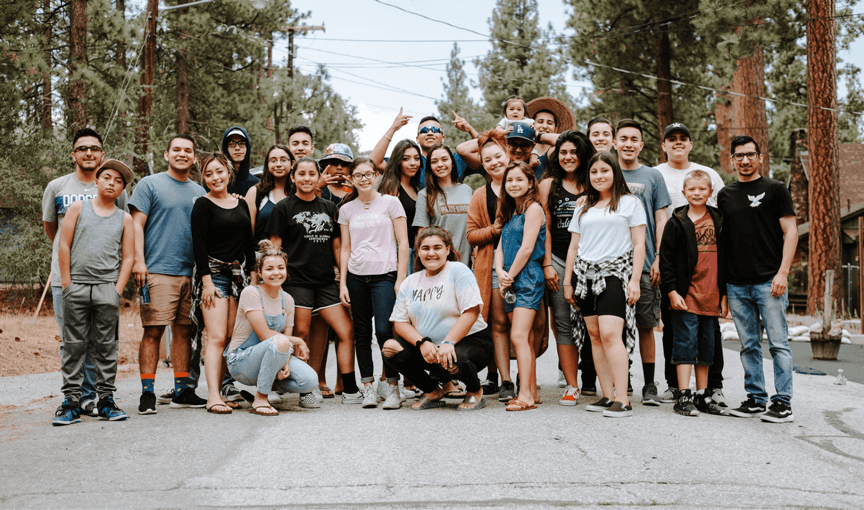By 2050, Africa's youth population will reach 1 billion. However, limited access to quality STEM education is hindering their employability, leaving the future workforce unprepared for high-demand jobs. According to the African Development Bank, only 12% of students graduate with STEM-related degrees. This perpetuates poverty and restricts economic growth across the continent.
As new technologies emerge, the digital divide between children in developed nations and those in the Global South continues to widen. This challenge can be traced to three key issues: lack of resources, low motivation, and limited teacher capacity.
Through our products, we aim to inspire children to pursue STEM from an early age, laying the foundation for future learning while developing critical thinking and problem-solving skills.
A group of students gathers around the Sinapse Robotics Kit, excited to explore. Each kit is battery-powered and fully portable—no cables or tools required. They begin by identifying components like motors, sensors, and LEDs, discussing their functions and how they might fit together.
Using a Lego-style snap-fit system, they build their robot through trial and error, checking progress against a reference image. When the structure is complete, they plug sensors into ports on the mainboard. If something doesn’t work, they debug it—sometimes it’s just a wrong connection.
They then launch the Sinapse IDE, a fully offline, block-based programming platform. It works like a puzzle: students drag and drop code blocks that represent actions and conditions. As they test and adjust their code, An AI-integrated learning layer monitors how they build logic, identify errors, and complete tasks. This offers personalization for the learners. It will offer prompts to the teacher to improve classroom interaction. The AI will adjust low-floor, high-ceiling tasks foe each student. for example the AI will make suggestions what question or what tasks to give to different students.
With just a few blocks of code, the robot executes its programmed behaviors. Students see their ideas take shape in real time—giving them a sense of accomplishment and reinforcing STEM concepts through hands-on experience.
We partnered with Watoto Church in Uganda and piloted our first fully functioning prototype of the kit and course. The pilot was a two-day event at a nonprofit organization featuring students from various age groups and classes. Its objective was to gather user feedback and optimize the product for the market. During the pilot, we received both positive and negative feedback. While children appreciated certain aspects of the prototype, such as the overall concept, they faced challenges during the robot construction process. Despite enjoying the experience, some components needed adjustments. We took this feedback to refine our product, which is now completely market-ready. however we are currently prelaunch.
Hardware Improvements: During the initial pilot, children found the DIY joinery of the kit challenging. We redesigned the parts to make assembly easier and more intuitive. initially it was nuts and bolts now its interlocking brick style
Curriculum Refinement: Some students struggled with programming terminology like "input" and "output." In response, we added basic terminology instruction at the start of the curriculum to build foundational understanding.
IDE Support: A few students had trouble using the Integrated Development Environment (IDE). We addressed this by developing our inhouse IDE, initially for the pilot we were using open source IDE.
Faster Engagement: To keep children motivated, we introduced modules that allow them to interact with individual components (like sensors or motors) early on, so they can see immediate results after programming.
Aesthetics: Based on feedback, we improved the visual appeal of the product to make it more attractive and engaging for students.
Our website will be live soon, where you’ll be able to order the kit, access the full set of courses, download all required documentation, and connect with our co-founders and educators through the courses page. If you’d like to try it out immediately, you can also reach us at ceo@synapselearn.org — we’ll arrange delivery of the kit, provide all coursework materials, and connect with you for live online sessions.



